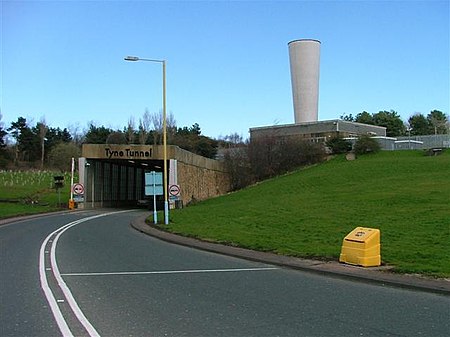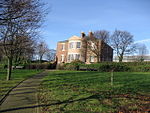The Jarrow March of 5–31 October 1936, also known as the Jarrow Crusade, was an organised protest against the unemployment and poverty suffered in the English town of Jarrow during the 1930s. Around 200 men (or "Crusaders" as they preferred to be referred to) marched from Jarrow to London, carrying a petition to the British government requesting the re-establishment of industry in the town following the closure in 1934 of its main employer, Palmer's shipyard. The petition was received by the House of Commons but not debated, and the march produced few immediate results. The Jarrovians went home believing that they had failed.
Jarrow had been a settlement since at least the 8th century. In the early 19th century, a coal industry developed before the establishment of the shipyard in 1851. Over the following 80 years more than 1,000 ships were launched in Jarrow. In the 1920s, a combination of mismanagement and changed world trade conditions following the First World War brought a decline which led eventually to the yard's closure. Plans for its replacement by a modern steelworks plant were frustrated by opposition from the British Iron and Steel Federation, an employers' organisation with its own plans for the industry. The failure of the steelworks plan, and the lack of any prospect of large-scale employment in the town, were the final factors that led to the decision to march.
Marches of the unemployed to London, termed "hunger marches", had taken place since the early 1920s, mainly organised by the National Unemployed Workers' Movement (NUWM), a communist-led body. For fear of being associated with communist agitation, the Labour Party and Trades Union Congress (TUC) leaderships stood aloof from these marches. They exercised the same policy of detachment towards the Jarrow March, which was organised by the borough council with the support of all sections of the town but without any connection with the NUWM. During their journey the Jarrow marchers received sustenance and hospitality from local branches of all the main political parties, and were given a broad public welcome on their arrival in London.
Despite the initial sense of failure among the marchers, in subsequent years, the Jarrow March became recognised by historians as a defining event of the 1930s. It helped to foster the change in attitudes which prepared the way to social reform measures after the Second World War, which their proponents thought would improve working conditions. The town holds numerous memorials to the march. Re-enactments celebrated the 50th and 75th anniversaries, in both cases invoking the "spirit of Jarrow" in their campaigns against unemployment. In contrast to the Labour Party's coldness in 1936, the post-war party leadership adopted the march as a metaphor for governmental callousness and working-class fortitude.









